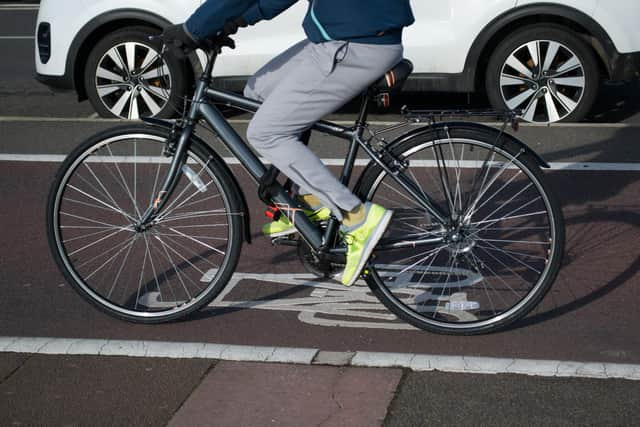Small, specific changes help us to travel better by cycling or walking - Sheffield Hallam's Madelynne Arden and Rachael Thorneloe
This week, Sheffield played host to the UK’s biggest active travel event, Cycle City Active City, with representatives from government, local authorities and the professional sector meeting to discuss how we make the government’s vision a reality.
As health psychologists, we have researched active travel behaviours, the range of factors that influence them and, crucially, the small changes we can all make that will have an impact.
Advertisement
Hide AdAdvertisement
Hide AdChoosing to travel under your own steam – walking or cycling rather than taking the car – has significant benefits. This kind of active travel is good for the environment; it’s good for our wallets – an increasing concern given the rising costs of fuel and the cost-of-living crisis; and it’s good for our health.


Making greener changes to the way in which we travel sounds relatively easy – we just need to use our car less and walk or cycle our journeys more often.
However, our travel decisions are influenced by whole range of factors, so if we want to support people to make changes to how they get around their community, we first need to carefully look at all of these influences on travel choices.
Our travel behaviours are influenced by the environments and infrastructure in our city – having cycle lanes that feel safe and which extend all the way from home to our destination may encourage us to be more active (if we have a bike and can ride it), and having pleasant green spaces to walk through with attractive destinations within reasonable travel time from home can make our journeys more pleasant and desirable and so we are more likely to repeat them.
Advertisement
Hide AdAdvertisement
Hide AdHowever, the way that we travel from place to place can be quite fixed. We don’t often ponder how we are going to get from A to B for the regular journeys we make day to day and week to week. Rather, we have strong habits for travel – and these can be difficult to change. The way you travelled to work, took the kids to school, or went shopping this week were probably the same as last week.
If we are to make sustained changes we need to make realistic and specific plans.
Recently we conducted a study across Yorkshire and the Humber, funded by the Local Government Association, that explored different ways to encourage people to undertake more of their short local journeys actively.
The first way, was to encourage people to think about their own personal motivations for active travel – for some this was about the health of themselves and their family. For others this was about the positive impacts that active travel can make on the environment. These people increased the proportion of their active journeys by on average six per cent. Combining this ‘focus on the positives’ with planning was even more beneficial.
Advertisement
Hide AdAdvertisement
Hide AdPeople who also made a commitment to swap a specific weekly journey from using their car to walking or cycling increased the proportion of their active journeys by an average of eight per cent. That such a very simple planning intervention could have an effect sounds too good to be true, but it’s exactly this kind of approach that can change habits, interrupting our old routine with a clear plan to do something different.
Over time and with repetition this new travel plan can become a new ‘good’ habit. Swapping one local car journey per week sounds like a tiny change. This is good for the individual – we’re not asking too much of any one person and we are acknowledging that not all journeys are appropriate to change. In our study people found it particularly difficult when they had heavy bags to carry and particularly for women, some routes or times of day didn’t feel safe to walk or cycle. But are these small changes enough to make a real difference?
We calculated that for every 1,000 people who make a plan to swap one local car journey per week for a walked or cycled journey, over a year this would save the same amount of carbon dioxide as would be used in that time by 100 trees. And as more people switch this will begin to become the norm – as social creatures we tend to replicate the behaviours we see around us so these little changes could have positive impacts on others.
Small planned changes from each of us have the potential to make a big difference to our communities. Which of your journeys will you switch next week?
- Prof Arden and Dr Thorneloe are health psychology academics at Sheffield Hallam University.